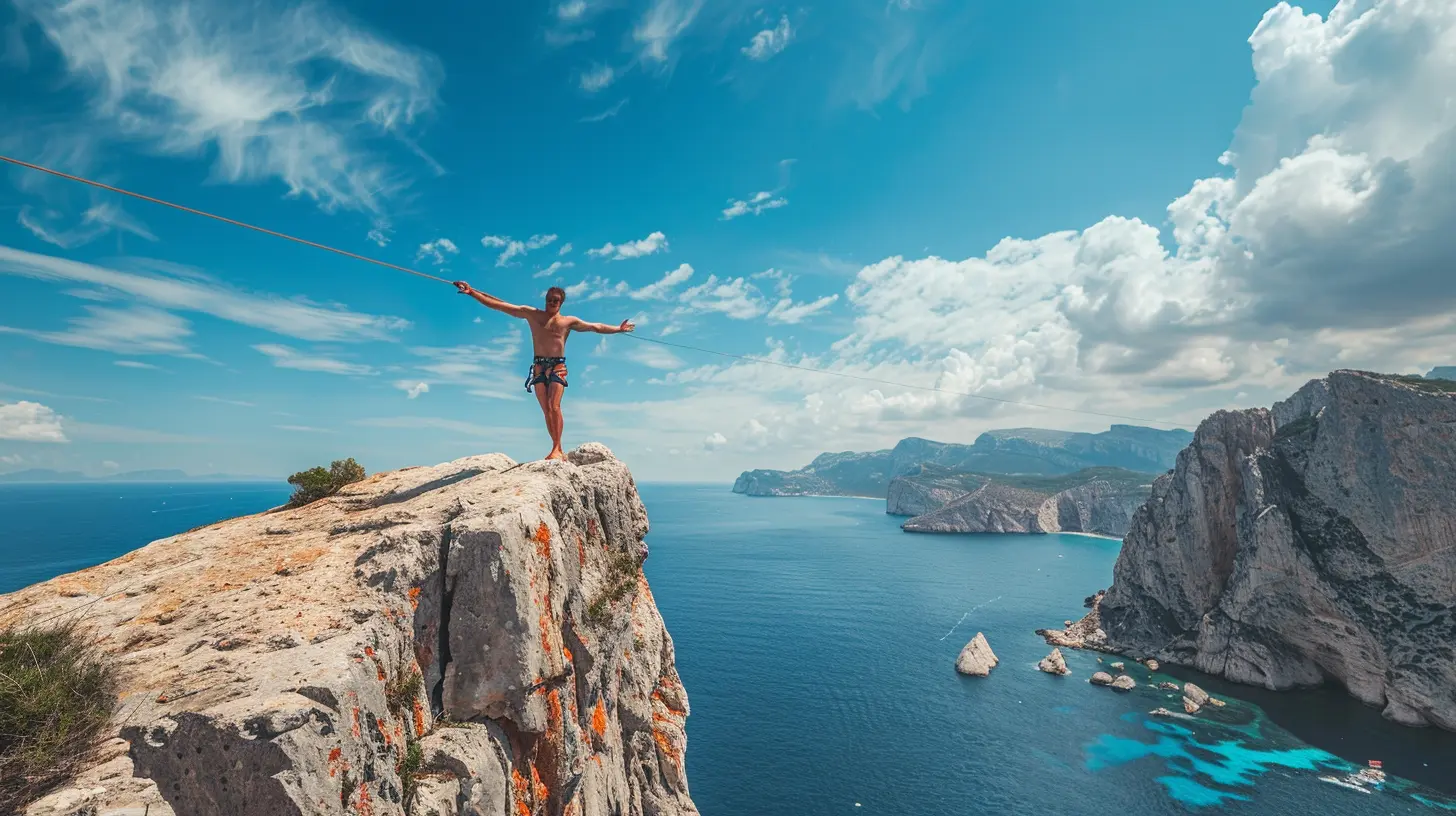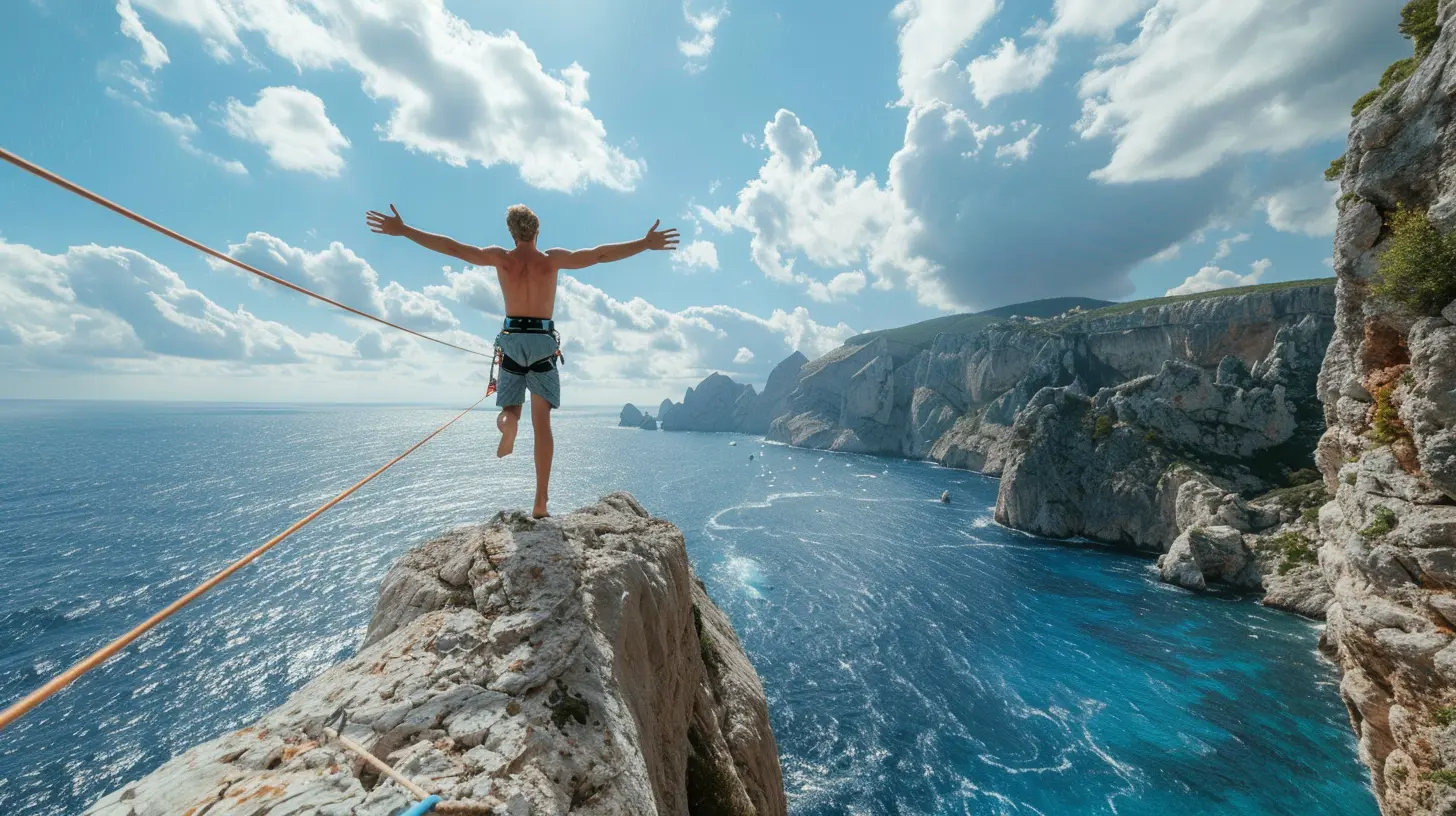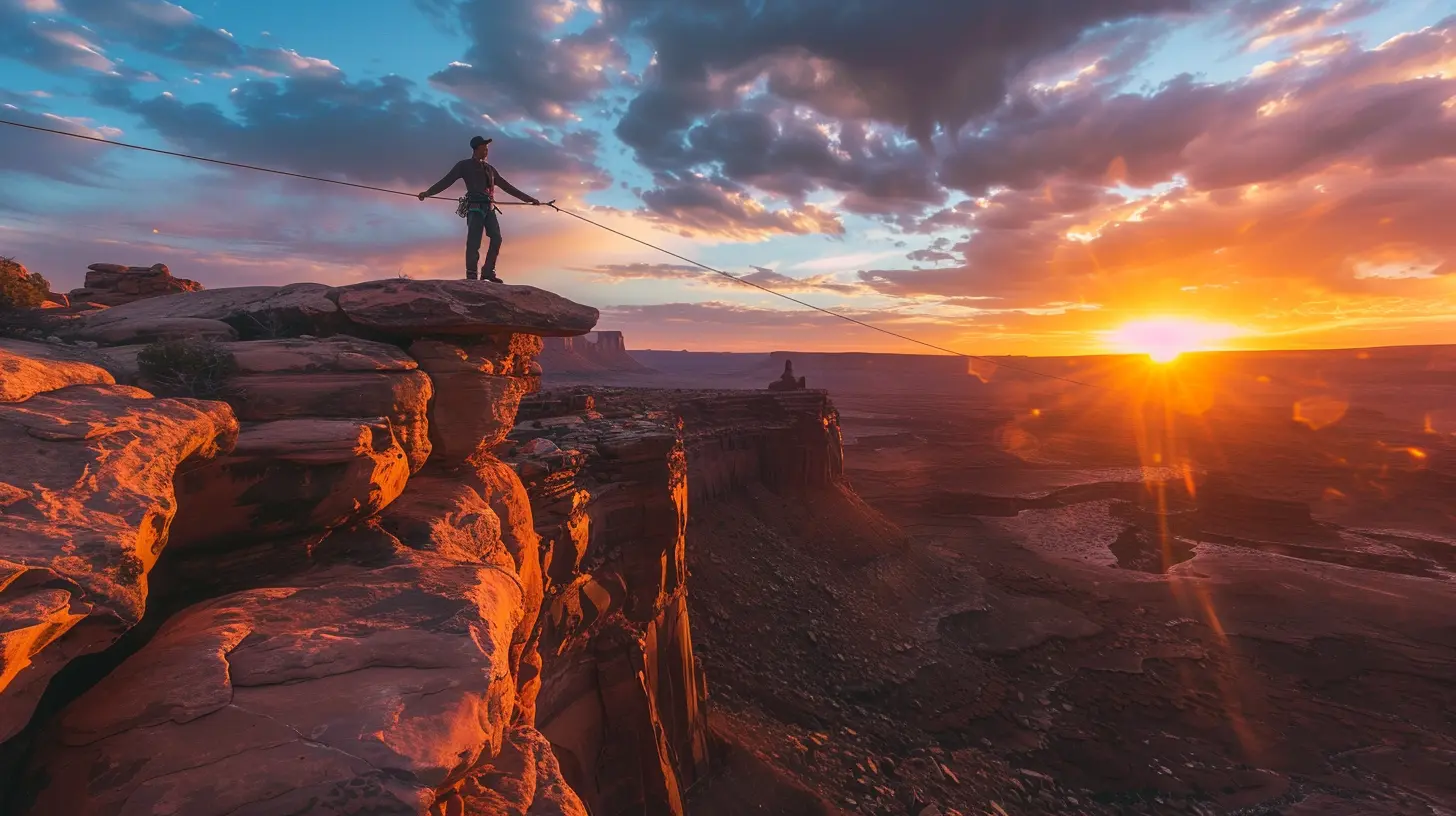Slacklining: Balancing on the Edge of Adventure
27 June 2025
Ever seen someone walking on a thin line tied between two trees and thought, “Wow, that looks kinda crazy… but also really cool”? That’s slacklining. It’s a wild mix of adventure, zen, and circus-level coordination, all packed into a strip of webbing that dares you to balance where gravity wants to win.
Whether you're someone craving adrenaline or just want to challenge your focus and balance, slacklining is the unexpected sport that might just change how you move through the world—one shaky step at a time.

What Exactly Is Slacklining?
Imagine a tightrope, but looser, wider, and more forgiving. That’s slacklining in a nutshell. You rig a flat, stretchy line between two anchor points—often trees—and try to walk, bounce, or even do tricks on it. It’s not just a test of physical balance but of mental clarity too.The line isn't static; it sways and ripples beneath you. So each step is a conversation between your body and the slackline. You’re not just walking—you’re dancing with tension, constantly adjusting to stay upright.
Not Just for Daredevils
Before you think this is something only thrill-seekers and acrobats can do, let’s set the record straight: slacklining is for everyone. Kids, adults, yogis, hikers, and even office workers (yes, really) have all found meaning and joy in it.You don’t need fancy gear or a gym membership. All you need is some open space, a basic slackline kit, and the guts to step up and give it a try.

The Origins: From Climbers to Global Phenomenon
Slacklining first took root in the climbing community of Yosemite National Park back in the 1980s. Back then, climbers needed something to do during rest days. So, they started walking on chains, ropes, and eventually webbing.This pastime evolved—like any good trend does—and turned into a full-fledged sport with multiple disciplines like tricklining (doing flips), longlining (walking longer distances), and even highlining (yup, walking high above ground, harness optional!).
Nowadays, you’ll find slackliners on beaches, in parks, mountain cliffs, and even in urban jungles. It’s a global movement with one mission: balance, adventure, and personal growth.

Why People Are Falling in Love With Slacklining
Let’s be real: at first, slacklining feels impossible. Like walking on jelly or trying to ride a wobbly bike with no training wheels. But that initial struggle? That’s exactly why people fall in love with it.1. It's Crazy Fun (Even When You Fall)
You’re going to fall. A lot. But falling off a slackline isn't failure—it’s feedback. Every tumble teaches you something. And honestly, the laughter that follows is half the fun. It's playtime for grownups.2. Builds Strength Without the Gym
Tired of lifting weights or running on treadmills? Slacklining works your core, legs, and even arm muscles like nothing else. Your body is constantly adjusting and stabilizing. It's like doing squats, planks, and yoga—all at once.3. Mental Focus Like a Monk
When you're on the line, nothing else exists. No stress about work. No endless to-do list. Just you, your breath, and the line. It’s meditation in motion. Think of it like mental floss—it clears the junk out of your head and makes room for clarity.4. Totally Portable. Set It Up Anywhere.
All you need is a couple of sturdy anchors and some space. Parks, backyards, forests, or even between posts at the beach—all fair game. It’s like bringing your own personal playground wherever you go.
Getting Started With Slacklining
Okay, so you’re pumped to try it out. Let’s talk basics.What You’ll Need
- Slackline Kit: Includes the webbing and ratchet system to tighten it.- Two Strong Anchor Points: Think trees or poles. If using trees, add some padding to protect the bark.
- Flat Open Space: You'll fall a few times, so avoid rocky or uneven ground.
Tips for Total Beginners
- Start low: Keep your line 2 feet off the ground or less.- Find a friend: Having support (literally!) makes a difference.
- Arms up, eyes forward: Keep your gaze ahead, not down at your feet.
- Breathe: Seriously, don’t forget. Holding your breath makes balancing harder.
The First Step is the Hardest
Your first time will feel like standing on a rubber hose over water. Your knees will shake, your arms will flail. That’s normal. Everyone looks like a newborn deer the first time. The trick? Keep trying. Muscle memory is real—and it kicks in faster than you'd expect.Beyond Basics: Different Styles of Slacklining
Once you’ve got your basic balance down, the rabbit hole goes deep. Let’s break it down.Tricklining
High jumps, flips, butt bounces—tricklining is the adrenaline-pumping cousin of slacklining. The line is more dynamic and bouncy, turning it into a trampoline-meets-tightrope showdown.Longlining
Think marathon instead of sprint. These lines stretch over 100 feet. It requires next-level endurance and focus, but the mental rewards? Off the charts.Highlining (Read: Not for the Faint-Hearted)
This takes the game to the sky—literally. Picture a line rigged 100s or even 1000s of feet above ground. You’re harnessed in (mostly), but the thrill is unmatched. It’s not just about balance at that height—it’s about confronting fear.Waterlining
Walking a line over water. It’s fun, forgiving, and you get soaked if you fall—which you will. Perfect for summer days.The Emotional Side of Slacklining
Here’s what no one tells you: slacklining can change you. Not just your body—but your mindset, too.You’ll learn patience and persistence. You’ll get comfortable with failure. You’ll understand what it means to keep trying even when progress feels invisible. Because each time you fall and get back up, you’re building more than physical strength—you’re building resilience.
And honestly, in a world that moves a million miles an hour, slacklining forces you to slow down. To focus. To breathe. It’s an anchor in chaos.
Community and Connection
The slackline community? Super inclusive and friendly. Whether you’re on Instagram, Reddit, or at a local jam session in the park—people love to share tips, celebrate small wins, and cheer you on. You’ll meet folks from every walk of life, all connected by the love of balance.Is It Safe?
This is always the big question. And the answer is: yes, with common sense.For ground-level slacklining, falls are short and safe—especially if you’re practicing over soft grass. For higher setups or tricklining, using padding and safety harnesses is crucial.
As with any sport, respect the gear, learn the basics, and listen to your body. Injuries are rare if you prioritize safety and use proper setups.
Words to the Wise: What I Wish I Knew Before I Started
- Don’t expect to walk the whole line on day one. Wobble is part of the journey.- Your core is more important than your feet.
- Record your sessions—you’ll be surprised how fast you improve.
- Celebrate every step (literally). Success is a single step without falling.
Slacklining and Mental Health
Here’s the kicker—slacklining has legit mental health benefits. It can reduce anxiety, improve focus, and even help with symptoms of ADHD and depression.Why? Because it forces mindfulness. You can’t overthink or multitask up on that line. It’s pure presence. That kind of focus calms the mind, elevates mood, and creates a sense of peace in motion.
Final Thoughts: Step onto the Line
So, what are you waiting for? Slacklining isn’t just a sport—it’s an experience. A conversation between mind and body. A rolling meditation. A whacky, wobbly dance with tension.You don’t have to be an athlete or adrenaline junkie to enjoy it. You just have to be curious. A little brave. And willing to fall a few times along the way.
Because at the end of the day, slacklining teaches a lesson we all need: balance isn’t about perfection—it’s about staying present and getting back up.
So go ahead. Rig a line. Step up. And find your balance—on the edge of adventure.
all images in this post were generated using AI tools
Category:
Extreme SportsAuthor:

Uziel Franco
Discussion
rate this article
2 comments
Roxanne Foster
Slacklining blends athleticism with mindfulness, offering thrill-seekers a unique way to challenge physical limits and embrace nature.
November 9, 2025 at 4:43 AM
Emily McKinley
In the dance of tension, thrill meets grace; A tightrope dreams where courage finds its place. Slacklining beckons—nature’s call to embrace.
July 12, 2025 at 4:17 AM

Uziel Franco
Thank you! Beautifully captures the essence of slacklining—where courage and nature intertwine.


